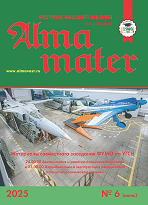UDC 378::004
https://doi.org/10.20339/AM.06-20.070
U.A. Kogteva is third year PhD student (Sociology) at University of Technology, Korolev City, Moscow Region e-mail: u.kogteva@ut-mo.ru
Analyzed is the problem of digitalization of educational media space. Educational media space is considered from comprehensive point of view and includes three main levels, i.e. interaction between teacher and student in educational process, internal and external environment. Each level is digitalized including digitalization of space and of interaction. The author studied foreign sources relating to the digital gap and digital divide that are relevant for modern society. Results of the author’s research conducted in the form of expert survey are given and interpreted in the article. The experts were professors of Russian and European universities. It was paid particular attention to results, concerning several indicators of digitalization of educational media space, in particular, instrumental, analytical and strategic information competences, and media space of university in general. The author identifies problem zones, requiring organization to take action, and growth points, indicating digitalization potential.
Key words: digitalization, university’s media space, expert survey, management.
References
- Brotcorne P., Collin S., Schneider E. Des recherches en éducation au domaine des technologies éducatives: quelles dynamiques d’appropriation des approches critiques? URL: http://dx.doi.org/10.18162/fp.2019.543
- Valenduc G., Technological Revolutions and Societal Transitions. URL: https://ssrn.com/abstract=3180000 or http://dx.doi.org/10.2139/ssrn.3180000
- Wennekers A., Bassler A., Sonck N., Pennekamp S., Fernee H., De Haan J. Media:Time: A New Time-Use Survey Method to Capture Today’s Media Use. URL: https://doi.org/10.29115/SP-2017-0022
- Brotcorne P., Bonnetier C., Vendramin P. Une numérisation des services d’intérêt général qui peine à inclure et à émanciper tous les usagers. URL: http://journals.openedition.org/terminal/4809
- Van Laar E., Van Deursen A.J., Van Dijk J.A., De Haan J. Determinants of 21st Century Skills and 21st-Century Digital Skills for Workers: A Systematic Literature Review. URL: https://doi.org/10.1177/2158244019900176
- Selwyn N., Facer K. Beyond the digital divide: rethinking digital inclusion for the 21st century. London. 2007.
- Yim S., Warschauer M. Students Initiating Feedback: The Potential of Social Media. In: Feedback in Second Language Writing: Contexts and Issues. Cambridge: Cambridge University Press. 2019.
- Kogteva, U.A. Transformation of the university`s media space in the information society. Sociology of Education. 2018. No. 4. P. 104–117.
- Kirilina, T.Yu. Social information technologies of communication of the teacher and the student. In: Cognition of culture as condition of renewing of society. Prospects of development of contemporary society. 2019. P. 255–256.
- Kogteva, U.A., Kirilina, T.Yu. Information Competences of Educational Process’s Participants in the Media Space of a Modern University. Social policy and sociology. 2019. No. 2. P. 35–44.











.png)






